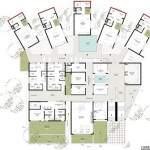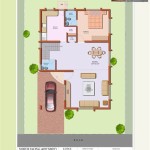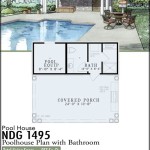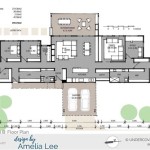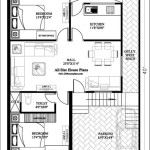Modern Low-Cost House Plans in Sri Lanka
The Sri Lankan housing market, like many others globally, faces the challenge of providing affordable and modern housing solutions. Increased urbanization, rising land costs, and the need for sustainable building practices necessitate innovative approaches to house design and construction. Modern low-cost house plans address these challenges by prioritizing efficient space utilization, cost-effective materials, and streamlined construction processes tailored to the specific environmental conditions and cultural preferences of Sri Lanka.
This article explores the key aspects of modern low-cost house plans in Sri Lanka, outlining the design considerations, material choices, and construction techniques that contribute to affordability without compromising quality or aesthetic appeal. The focus is on practical solutions that can be adapted to varying family sizes, site conditions, and budgetary constraints, ultimately empowering individuals and families to realize their dream of owning a modern, comfortable home.
Design Considerations for Affordability
Effective design is arguably the most crucial factor in achieving low-cost housing. A well-conceived design minimizes material waste, simplifies construction, and optimizes space utilization, resulting in significant cost savings. Several key design considerations are particularly relevant in the Sri Lankan context.
Compact Footprint: Designing a house with a smaller footprint is one of the most direct ways to reduce construction costs. This involves careful planning of room sizes and layouts to maximize functionality within a limited area. Open floor plans, which combine living, dining, and kitchen areas, create a sense of spaciousness without requiring additional square footage. Vertical expansion, where possible and permissible by zoning regulations, can also be considered as an alternative to sprawling layouts.
Simple Geometry: Houses with simple rectangular or square shapes are inherently more cost-effective to build than those with complex geometries. Intricate rooflines, numerous corners, and non-standard shapes increase labor costs and material waste. Opting for a simple, clean design streamlines the construction process and reduces the potential for errors.
Passive Design Strategies: Incorporating passive design principles can significantly reduce the long-term operational costs of a house. These strategies leverage natural elements such as sunlight and wind to provide heating, cooling, and ventilation, thereby minimizing reliance on air conditioning and artificial lighting. Orientation of the house to maximize natural light and cross-ventilation is essential. Overhangs, shading devices, and strategically placed windows can further regulate indoor temperatures and reduce energy consumption.
Adaptable and Expandable Designs: Designing a house that can be easily adapted or expanded over time is a practical approach for families with growing needs. This involves planning for future additions, such as extra bedrooms or a second story, from the outset. Modular designs, where additional sections can be added as needed, are particularly well-suited for this purpose. This approach allows homeowners to build according to their current needs and budget, while retaining the flexibility to expand their living space in the future.
Local Building Codes and Regulations: Thorough knowledge of local building codes and regulations is essential for any construction project. Compliance with these regulations ensures the safety and structural integrity of the building. It is advisable to consult with a qualified architect or engineer who is familiar with the specific requirements of the area.
Material Choices for Cost-Effectiveness in Sri Lanka
The selection of building materials plays a significant role in determining the overall cost of a house. Choosing locally sourced, readily available, and cost-effective materials can result in substantial savings. The following materials are commonly used in low-cost housing construction in Sri Lanka:
Cement Blocks: Cement blocks are a popular and relatively inexpensive building material widely used in Sri Lanka. They are durable, readily available, and easy to work with. Cement blocks can be used for both load-bearing walls and non-load-bearing partitions. Different sizes and strengths of cement blocks are available to suit various structural requirements.
Laterite Bricks: Laterite bricks, made from locally available laterite soil, are a sustainable and cost-effective alternative to clay bricks. They possess good thermal properties, helping to regulate indoor temperatures. Laterite bricks are also relatively easy to produce and can be manufactured on-site, reducing transportation costs.
Timber: Timber is a versatile and aesthetically pleasing building material. While the cost of certain hardwood species can be relatively high, locally sourced softwood timber, such as pine, can be a more affordable option. Timber can be used for framing, roofing, flooring, and cladding. Proper treatment and preservation are essential to protect timber from pests and decay.
Bamboo: Bamboo is a rapidly renewable resource with excellent structural properties. It is a lightweight, strong, and flexible material that can be used for various building applications, including framing, cladding, and roofing. Bamboo is particularly well-suited for low-cost housing construction in rural areas where it is readily available. Proper treatment is necessary to enhance its durability and resistance to pests.
Clay Tiles: Clay tiles are a traditional and durable roofing material commonly used in Sri Lanka. They provide good insulation and are relatively resistant to fire. Clay tiles are available in a variety of shapes, sizes, and colors to suit different architectural styles. While the initial cost of clay tiles may be higher than some other roofing materials, their longevity and low maintenance requirements make them a cost-effective option in the long run.
Recycled Materials: Incorporating recycled materials into construction can reduce costs and minimize environmental impact. Recycled concrete, reclaimed timber, and recycled plastic can be used for various building applications. Utilizing recycled materials not only reduces waste but also conserves natural resources.
Construction Techniques for Efficiency and Economy
Employing efficient construction techniques can significantly reduce labor costs and construction time. Streamlined processes, skilled labor, and effective project management are essential for achieving cost-effective construction. The following construction techniques are commonly used in low-cost housing projects in Sri Lanka:
Pre-Fabrication: Pre-fabrication involves manufacturing building components, such as walls, floors, and roofs, off-site and then assembling them on-site. This technique offers several advantages, including reduced construction time, improved quality control, and minimized material waste. Pre-fabricated components can be made from various materials, including timber, steel, and concrete.
Simplified Foundations: Traditional foundation systems can be costly and time-consuming to construct. Simplified foundation systems, such as shallow foundations or raft foundations, can be a more cost-effective alternative in certain soil conditions. A geotechnical investigation is necessary to determine the suitability of different foundation types.
Use of Skilled Labor: Employing skilled and experienced construction workers is essential for ensuring the quality and efficiency of the construction process. Skilled workers can perform tasks more quickly and accurately, reducing the risk of errors and rework. Investing in training and development for construction workers can improve their skills and productivity.
Formwork Systems: Efficient formwork systems are essential for concrete construction. Reusable formwork systems, such as steel or plastic forms, can be used multiple times, reducing material costs. Properly designed and maintained formwork systems ensure accurate and consistent concrete pours.
Effective Project Management: Effective project management is crucial for keeping the construction project on schedule and within budget. A well-defined project plan, clear communication, and regular monitoring are essential for successful project management. Using project management software can help to track progress, manage resources, and identify potential problems early on.
Community Participation: Encouraging community participation in the construction process can reduce labor costs and foster a sense of ownership. Involving local residents in tasks such as site preparation, material handling, and landscaping can contribute to the success of the project. Community participation also promotes social cohesion and empowers local communities.
In conclusion, modern low-cost house plans in Sri Lanka require a holistic approach that integrates efficient design, cost-effective materials, and streamlined construction techniques. Prioritizing these elements can enable the creation of affordable, comfortable, and sustainable homes that meet the needs of a diverse population.

O Builders Modern House Plans In Sri Lanka

House Plan Sri Lanka Nara Engineering 1000 3d Designs

Best 5 Two Story House Designs In Sri Lanka 2024 C Plus Design

House Plan Sri Lanka Nara Engineering 1000 3d Designs

Budget House Plan ලක ෂ 20 5 587 Sqft 3d Walkthrough Modern In Sri Lanka

Modern House Design Dream Home Level 04 4

Modern Architectural House Plans In Sri Lanka 2024 C Plus Design

Ideas For House Plans Photos Sri Lanka With Pictures Small Design

Box Type House Plans In Sri Lanka Elevations Kedella

Small Land House Plans In Sri Lanka Two Story Narrow Designs Model Plan

